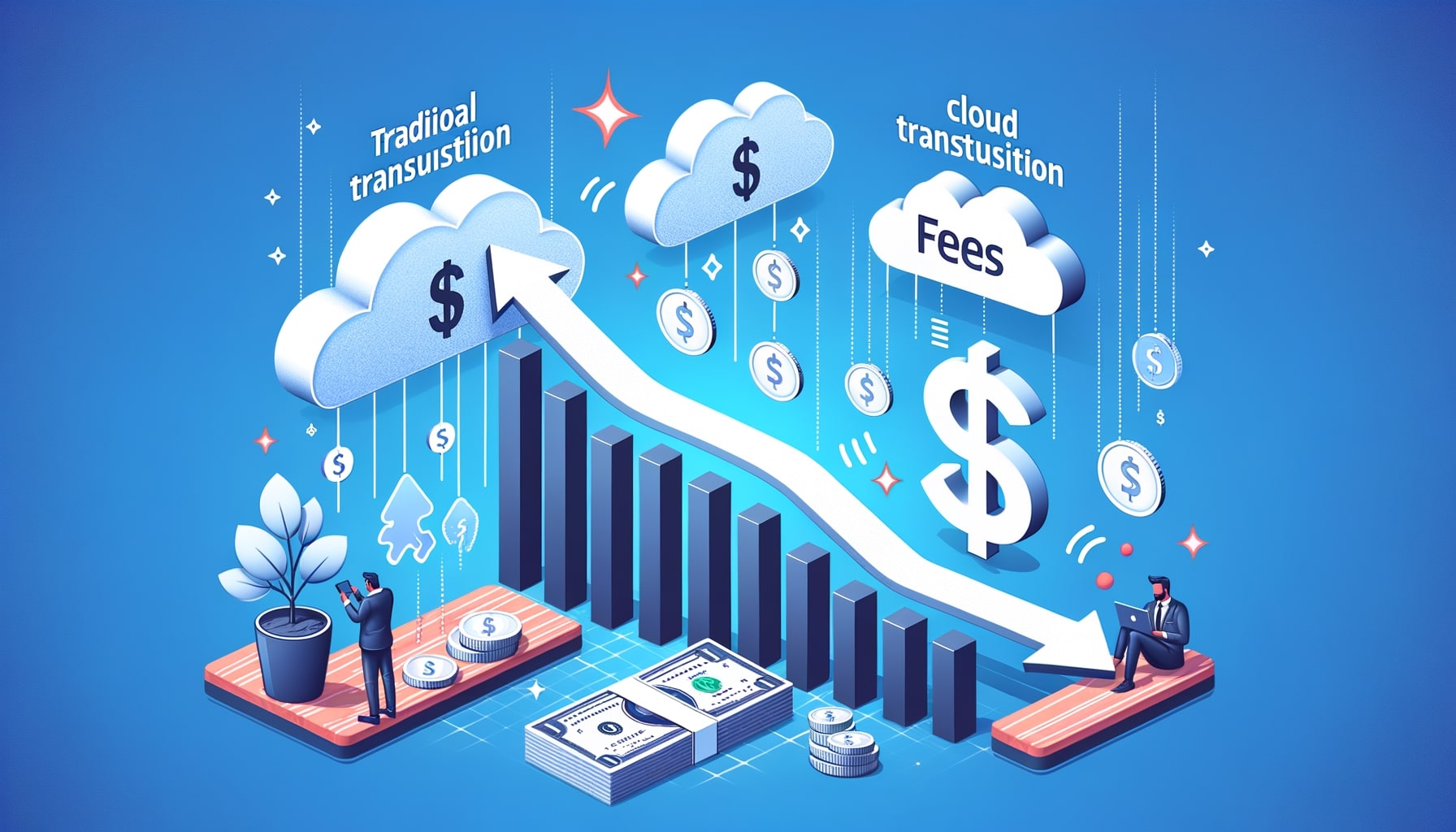Enhancing Customer Experience with Cloud Payments
In today’s digital age, customer experience has become a critical factor in the success of businesses across industries. With the rise of e-commerce and online transactions, customers have come to expect seamless and convenient payment experiences. This has led businesses to explore innovative solutions to enhance customer experience, and one such solution is cloud payments.
Cloud payments refer to the use of cloud computing technology to process and manage payment transactions. This technology allows businesses to securely store and access customer payment information, streamline the payment process, and provide a personalized and frictionless experience to customers. In this article, we will explore the benefits of cloud payments for businesses and how they revolutionize the customer experience.
Exploring the Benefits of Cloud Payments for Businesses
- Increased Efficiency: Cloud payments enable businesses to process transactions in real-time, reducing the time and effort required for manual payment processing. This not only improves operational efficiency but also allows businesses to serve more customers in a shorter span of time.
- Cost Savings: By adopting cloud payments, businesses can eliminate the need for expensive hardware and software installations. Cloud-based payment solutions are typically offered on a subscription basis, allowing businesses to pay only for the services they use. This significantly reduces upfront costs and ongoing maintenance expenses.
- Scalability: Cloud payments offer businesses the flexibility to scale their payment processing capabilities as their customer base grows. With cloud-based solutions, businesses can easily add or remove payment processing capacity based on demand, ensuring a seamless payment experience even during peak periods.
- Accessibility: Cloud payments can be accessed from anywhere, at any time, as long as there is an internet connection. This allows businesses to accept payments through various channels, such as online stores, mobile apps, or in-store terminals, providing customers with multiple options to make payments.
- Integration with Existing Systems: Cloud payment solutions can be seamlessly integrated with existing business systems, such as customer relationship management (CRM) software or inventory management systems. This integration enables businesses to have a unified view of customer data, improving the overall customer experience.
How Cloud Payments Revolutionize the Customer Experience
- Convenience: Cloud payments offer customers a convenient and hassle-free payment experience. With cloud-based solutions, customers can securely store their payment information, eliminating the need to repeatedly enter their details for each transaction. This saves time and effort, enhancing the overall convenience of the payment process.
- Personalization: Cloud payments enable businesses to collect and analyze customer data, allowing them to personalize the payment experience. By understanding customer preferences and behavior, businesses can offer tailored payment options, such as preferred payment methods or personalized offers, creating a more personalized and engaging experience for customers.
- Seamless Omnichannel Experience: Cloud payments enable businesses to provide a seamless omnichannel experience to customers. Customers can start a transaction on one channel, such as a mobile app, and complete it on another channel, such as a physical store. This eliminates the need for customers to start the payment process from scratch, providing a seamless and consistent experience across channels.
- Faster Checkout: Cloud payments streamline the checkout process, reducing the time it takes for customers to complete a transaction. With features like one-click payments or digital wallets, customers can complete transactions with just a few taps or clicks, improving the overall speed and efficiency of the payment process.
- Enhanced Security: Cloud payment solutions prioritize security and compliance, ensuring that customer payment information is protected. By storing payment data in secure cloud servers, businesses can reduce the risk of data breaches and fraud. Additionally, cloud payments often incorporate advanced security features, such as tokenization or encryption, further enhancing the security of customer transactions.
Implementing Cloud Payments: Key Considerations for Businesses
- Choosing the Right Provider: When implementing cloud payments, businesses need to carefully evaluate and choose the right payment service provider. Factors to consider include the provider’s reputation, security measures, pricing structure, integration capabilities, and customer support. It is important to select a provider that aligns with the specific needs and goals of the business.
- Compliance and Data Protection: Businesses must ensure that their cloud payment solution complies with industry regulations and data protection laws. This includes adhering to standards such as the Payment Card Industry Data Security Standard (PCI DSS) and implementing measures to protect customer data, such as encryption and secure data storage.
- Integration with Existing Systems: Businesses should consider the compatibility and integration capabilities of the cloud payment solution with their existing systems. Seamless integration with CRM, inventory management, and other business systems is crucial to provide a unified view of customer data and streamline operations.
- Training and Support: Adequate training and support should be provided to employees to ensure a smooth transition to cloud payments. Employees should be trained on how to use the new payment system, handle customer inquiries, and troubleshoot any issues that may arise. Ongoing support should also be available to address any technical or operational challenges.
Enhancing Security and Trust with Cloud Payments
Security is a top concern for businesses and customers when it comes to payment transactions. Cloud payments offer several features and measures to enhance security and build trust with customers.
- Tokenization: Cloud payment solutions often incorporate tokenization, a process that replaces sensitive payment data with a unique identifier or token. This ensures that customer payment information is not stored or transmitted in its original form, reducing the risk of data breaches.
- Encryption: Cloud payment solutions use encryption to protect customer payment data during transmission and storage. Encryption converts the data into an unreadable format, which can only be decrypted with the appropriate encryption key. This adds an extra layer of security to customer transactions.
- Secure Data Storage: Cloud payment solutions store customer payment data in secure cloud servers, which are protected by robust security measures. These measures include firewalls, intrusion detection systems, and regular security audits to ensure the integrity and confidentiality of customer data.
- Compliance with Industry Standards: Cloud payment solutions adhere to industry standards, such as the Payment Card Industry Data Security Standard (PCI DSS). Compliance with these standards ensures that businesses meet the necessary security requirements and protect customer payment information.
- Fraud Detection and Prevention: Cloud payment solutions often incorporate advanced fraud detection and prevention mechanisms. These mechanisms analyze customer transaction data in real-time, identifying suspicious patterns or activities that may indicate fraudulent behavior. By detecting and preventing fraud, businesses can build trust with customers and protect their financial interests.
Streamlining the Customer Journey with Cloud Payments
Cloud payments streamline the customer journey by simplifying the payment process and reducing friction at various touchpoints.
- Seamless Checkout: Cloud payments enable businesses to offer a seamless checkout experience to customers. With features like one-click payments or digital wallets, customers can complete transactions quickly and easily, without the need to enter their payment information repeatedly. This reduces friction and improves the overall checkout experience.
- Multiple Payment Options: Cloud payment solutions support a wide range of payment options, including credit cards, debit cards, digital wallets, and alternative payment methods. By offering multiple payment options, businesses cater to the diverse preferences of customers, enhancing their overall experience.
- Automatic Payment Reminders: Cloud payment solutions can be configured to send automatic payment reminders to customers. These reminders can be personalized based on customer preferences and payment history, ensuring that customers never miss a payment deadline. This improves customer satisfaction and reduces the risk of late or missed payments.
- Subscription Management: Cloud payment solutions often include subscription management features, allowing businesses to easily manage recurring payments and subscriptions. Customers can update their payment information, cancel or modify subscriptions, and view their payment history, all through a user-friendly interface. This simplifies the subscription management process and improves customer satisfaction.
- Order Tracking and Notifications: Cloud payment solutions can be integrated with order tracking systems, enabling businesses to provide real-time updates and notifications to customers. Customers can track the status of their orders, receive delivery notifications, and view their payment and order history in one place. This enhances transparency and keeps customers informed throughout the entire customer journey.
Leveraging Data Analytics to Improve Customer Experience with Cloud Payments
Cloud payments generate a wealth of data that businesses can leverage to gain insights into customer behavior and preferences. By analyzing this data, businesses can make data-driven decisions to improve the customer experience.
- Customer Segmentation: Cloud payment data can be used to segment customers based on their payment behavior, preferences, or demographics. This segmentation allows businesses to tailor their marketing and payment strategies to specific customer segments, improving the relevance and effectiveness of their initiatives.
- Personalized Offers and Recommendations: By analyzing customer payment data, businesses can identify patterns and trends, enabling them to offer personalized offers and recommendations to customers. For example, if a customer frequently purchases a particular product, businesses can offer discounts or recommendations for similar products, enhancing the customer’s shopping experience.
- Predictive Analytics: Cloud payment data can be used for predictive analytics, allowing businesses to anticipate customer needs and preferences. By analyzing historical payment data, businesses can identify patterns and trends that can help predict future customer behavior. This enables businesses to proactively address customer needs and provide personalized experiences.
- Fraud Detection and Prevention: Cloud payment data can be analyzed in real-time to detect and prevent fraudulent transactions. By leveraging machine learning algorithms and artificial intelligence, businesses can identify suspicious patterns or activities that may indicate fraudulent behavior. This helps protect both businesses and customers from financial losses and builds trust in the payment process.
- Continuous Improvement: Cloud payment data provides businesses with valuable insights into the effectiveness of their payment strategies and processes. By analyzing data on payment success rates, transaction times, or customer satisfaction levels, businesses can identify areas for improvement and implement changes to enhance the overall customer experience.
Overcoming Challenges in Adopting Cloud Payments for Customer Experience Enhancement
While cloud payments offer numerous benefits, businesses may face challenges when adopting this technology. It is important to address these challenges to ensure a successful implementation and enhance the customer experience.
- Security Concerns: Security is a major concern when it comes to cloud payments. Businesses must ensure that their chosen cloud payment solution meets industry standards and complies with data protection regulations. This includes implementing robust security measures, such as encryption and tokenization, and regularly monitoring and updating security protocols.
- Integration Complexity: Integrating cloud payment solutions with existing business systems can be complex and time-consuming. Businesses must carefully plan and allocate resources for integration, ensuring that the payment solution seamlessly integrates with other systems, such as CRM or inventory management. Collaboration between IT teams and payment service providers is crucial to overcome integration challenges.
- Employee Training and Adoption: Adopting cloud payments requires training employees on how to use the new payment system and handle customer inquiries. Businesses must invest in comprehensive training programs to ensure that employees are comfortable and proficient in using the new technology. Ongoing support and communication are also essential to address any concerns or challenges that employees may face during the transition.
- Customer Education: Customers may be unfamiliar with cloud payments and may have concerns about the security and privacy of their payment information. Businesses must educate customers about the benefits and security measures of cloud payments, addressing any concerns or misconceptions. Clear communication and transparency are key to building trust and encouraging customer adoption.
- Regulatory Compliance: Cloud payments are subject to various regulations and data protection laws, such as the General Data Protection Regulation (GDPR) in the European Union. Businesses must ensure that their cloud payment solution complies with these regulations and implement measures to protect customer data. Regular audits and assessments should be conducted to ensure ongoing compliance.
Frequently Asked Questions (FAQs) about Cloud Payments and Customer Experience
Q.1: What are cloud payments?
Cloud payments refer to the use of cloud computing technology to process and manage payment transactions. This technology allows businesses to securely store and access customer payment information, streamline the payment process, and provide a personalized and frictionless experience to customers.
Q.2: How do cloud payments enhance the customer experience?
Cloud payments enhance the customer experience by providing convenience, personalization, seamless omnichannel experiences, faster checkout, and enhanced security. Customers can enjoy a hassle-free payment process, personalized payment options, and a seamless experience across different channels.
Q.3: Are cloud payments secure?
Yes, cloud payments prioritize security and compliance. Cloud payment solutions often incorporate features such as tokenization, encryption, secure data storage, and compliance with industry standards like the Payment Card Industry Data Security Standard (PCI DSS). These measures ensure the security and protection of customer payment information.
Q.4: How can businesses leverage data analytics with cloud payments?
Cloud payments generate a wealth of data that businesses can analyze to gain insights into customer behavior and preferences. By analyzing this data, businesses can make data-driven decisions, personalize offers and recommendations, predict customer needs, detect and prevent fraud, and continuously improve their payment strategies and processes.
Q.5: What challenges do businesses face when adopting cloud payments?
Businesses may face challenges such as security concerns, integration complexity, employee training and adoption, customer education, and regulatory compliance. It is important to address these challenges through robust security measures, careful planning and resource allocation for integration, comprehensive employee training programs, customer education initiatives, and ongoing compliance assessments.
Conclusion
In the digital age, enhancing customer experience has become crucial for businesses to stay competitive. Cloud payments offer numerous benefits for businesses, including increased efficiency, cost savings, scalability, accessibility, and integration capabilities. These benefits, coupled with the revolutionizing impact of cloud payments on the customer experience, make it a compelling solution for businesses across industries.
Cloud payments streamline the payment process, provide convenience and personalization, enable seamless omnichannel experiences, and enhance security and trust. By leveraging data analytics, businesses can gain insights into customer behavior and preferences, enabling them to make data-driven decisions and continuously improve the customer experience.
While adopting cloud payments may present challenges, such as security concerns, integration complexity, and regulatory compliance, these challenges can be overcome through careful planning, collaboration, and ongoing support. By embracing cloud payments and prioritizing the customer experience, businesses can differentiate themselves in the market, build customer loyalty, and drive growth in the digital age.










